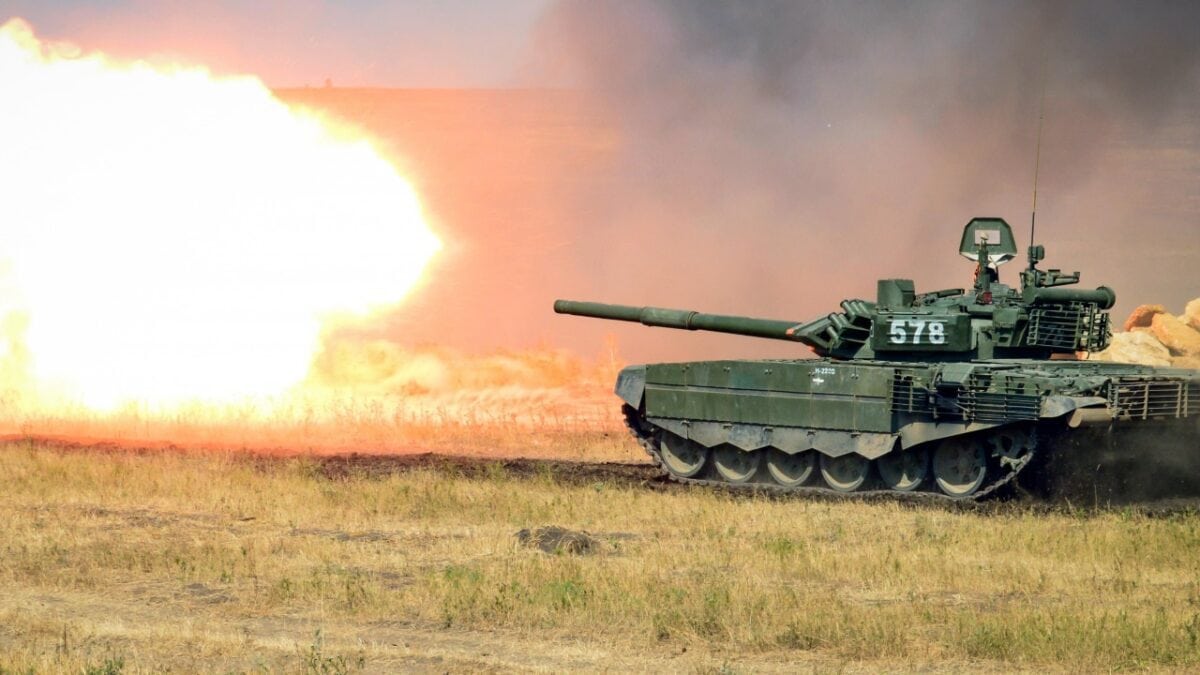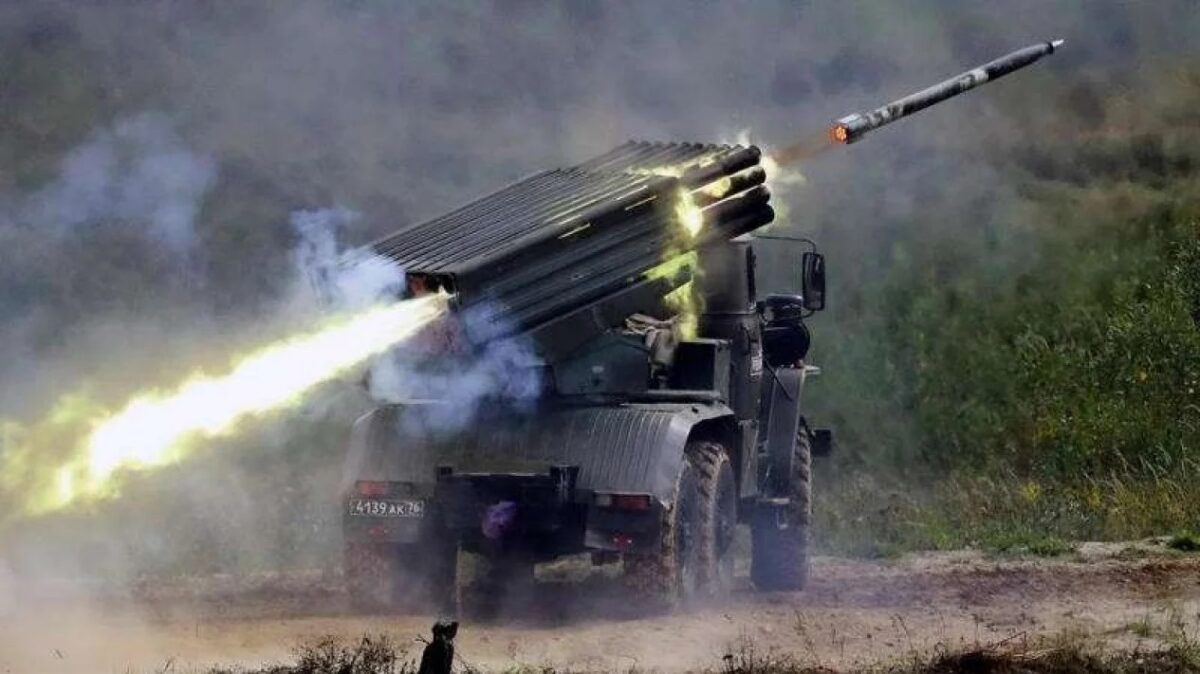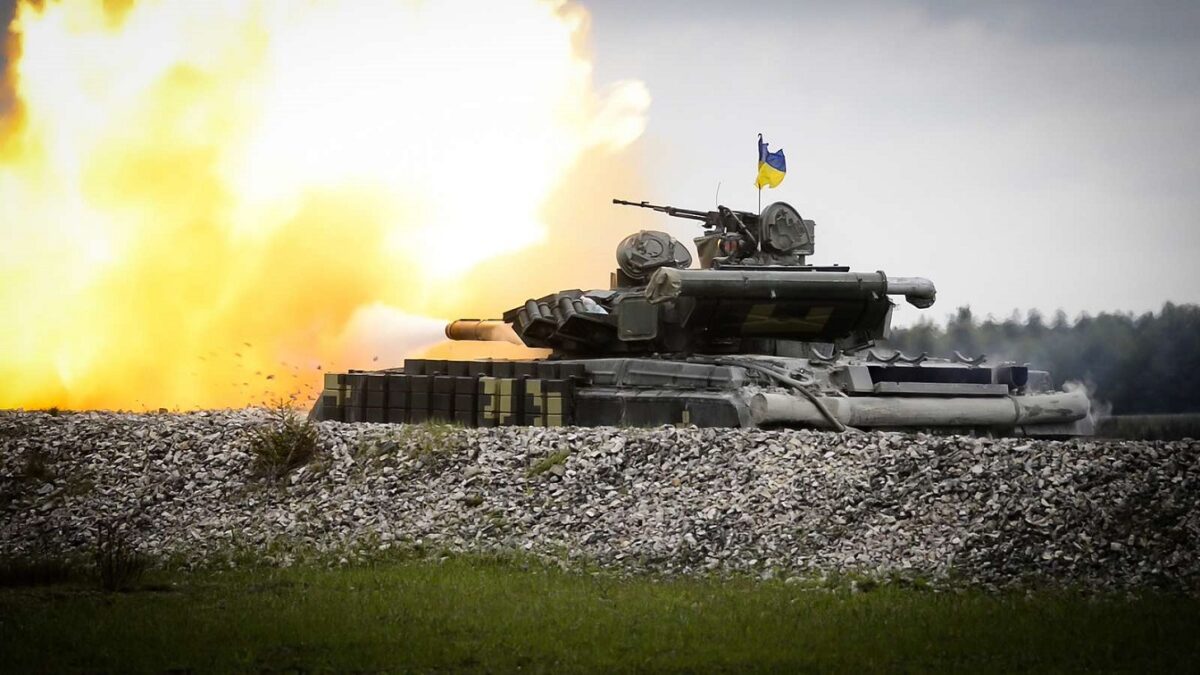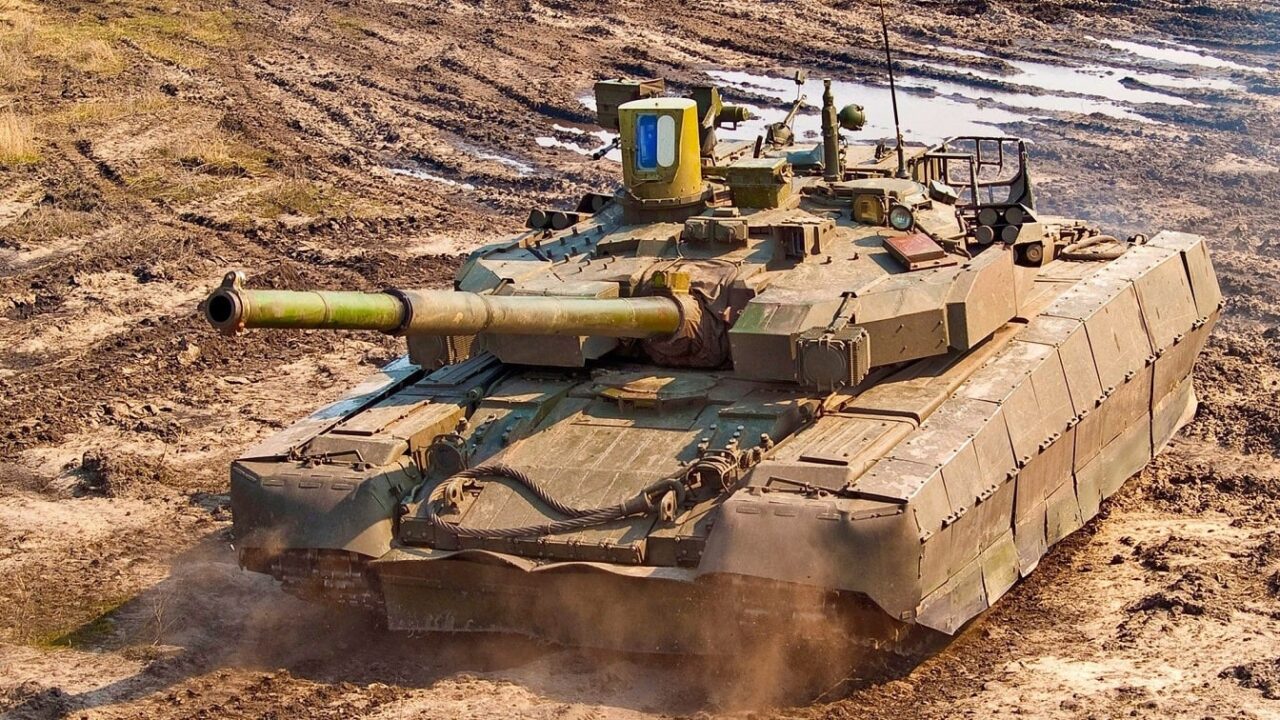Abstract: Assuming that a sovereign and viable Ukraine will survive this war, it would be advisable for the Ukrainian Army to streamline the variety of its weapons systems in order to boost effectiveness, reduce costs, and facilitate NATO compatibility.
Ukraine’s Army After the War
The Armed Forces of Ukraine (AFU) foiled the Russian attempt to capture Kyiv from February to March, recaptured the strategically important Zmiinyi island in July, and successfully liberated Kharkiv Oblast by mid-October. The direction the fighting has taken makes it fair to predict Ukraine will survive its conflict with Russia. It is thus reasonable to postulate what Ukraine’s post-war defense capabilities might look like, and offer suggestions to facilitate operational effectiveness, boost force sustainability, and promote interoperability with NATO. We will analyze all of this from the perspective of Ukraine’s tanks, infantry fighting vehicles, and artillery.
Standardizing the AFU’s Tanks
The Ukrainian Army used every available tank to stem Russia’s advances early in the war. Ukraine deployed a patchwork tank inventory that consisted primarily of locally upgraded ex-Soviet models, captured Russian tanks, and donations from its European neighbors. This does not make for an operationally optimal or efficiently sustainable armor fleet, let alone one compatible with NATO.
Ukraine’s tank fleet consists mostly of significantly upgraded versions of the T-64; locally augmented T-72s, supplemented with captured Russian T-72s; modernized T-80s along with captured Russian examples; and limited numbers of Polish PT-91 Twardy and Slovenian M55S tanks.
Barring further significant seizures of Russian tanks, the majority of post-conflict Ukrainian tanks would be T-64 and T-72 variants, amounting to about several hundreds. It would thereafter make logistical and economic sense for Ukraine to rebuild and reconfigure its military-industrial complex to provide for the maintenance, overhaul, and ammunition provisioning of these tanks. Over the next decade, they would provide the critical mass of the AFU’s armored capabilities, making them crucial to deterring another Russian invasion.
As for the AFU’s T-80s, Kyiv should look into converting as many of the chassis frames into the more capable T-84U Oplot tanks. Moreover, with an eye toward NATO membership, the Ukrainians should explore the re-establishment of production conversion lines for T-84-120 Yatagan models to conform to NATO’s Standardization Agreement (STANAG). This effort would address specifications regarding the tanks’ armament, communication systems, and other equipment. Attempting to upkeep its entire patchwork tank force would be costly and inefficient, with standardized augmentation across different models being difficult. Since Kyiv has repair experience for Soviet tanks with the necessary technical capabilities, and with the bulk of its tank inventory eventually confined to the T-64s, T-72s and NATO-compliant T-84s, the long-term logistical and cost burdens for Ukraine would be manageable.
Sorting Out the Army’s IFV Inventory
Turning to infantry fighting vehicles, Ukraine currently possesses former Soviet BMP-1 IFVs, along with Polish, Greek, Slovakian and Swedish BMP-1 variants donated as military aid. It also has a number of captured enemy BMP-1s, all of which have received varying levels of augmentation.
The more modern BMP-2s are the most numerous IFV in Ukraine’s possession, with numbers in the high hundreds, including about 158 captured from the Russians. Additionally, the AFU employs a modest number of captured BMP-3 IFVs, which supplement similarly small numbers of domestically made BTR-3 and BTR-4 amphibious IFVs. This latter group of forms a significant minority of Ukraine’s IFV fleet, numbering less than 200. Combining the five IFV types would bring the approximate total to more than 1,300. Other models of Ukrainian-owned IFVs, like the Soviet-made BMD series, are not examined since they are numerically less significant.
As with the previous suggestions regarding Ukrainian tanks, military manufacturing capabilities should be directed toward sustaining the service lives of the remaining BMP-1s, BMP-2s, and BMP-3s – especially the captured BMP-2M Berezhok, which is one of Russia’s best armored vehicles. A purposeful standardization of models is crucial to ensure interoperability and cost efficiency, conditions of paramount importance for a post-war Ukraine.

T-72 tank firing. Image Credit: Creative Commons.
These IFVs would then be able to provide cost-effective service for more than 10 years. That would give the Ukrainian Defense Ministry enough time to choose a suitable NATO-compliant IFV, for which a fair acquisition contract can be negotiated encompassing crew training, licensed assembly/manufacture in Ukraine, and technology transfers to aid future upgrades. Reputable Western-designed IFVs that could enhance the Ukrainian Army’s armored maneuver capabilities include the German Rheinmetall Lynx, the South Korean Doosan DST K21, and Swedish BAE Systems’ AB CV90.
Furthermore, considering the BMP-2’s usage by countries such as India, Kazakhstan, and Slovakia, a well-maintained BMP-2 fleet would certainly elicit interest from potential buyers such as Finland, which has the infrastructural capabilities to upgrade the vehicles into the modernized BMP-2MD and then resell them to interested nations. Countries such as Saudi Arabia and the Philippines have also previously expressed interest in acquiring BMP-3s, and an arms transfer agreement would provide Ukraine with funds for military modernization.
Streamlining the Ukrainian Artillery Corps
Considering the role that artillery has played in the battle for Kherson and in the substantial destruction of vital Russian infrastructure, the sustainable optimization of Ukrainian artillery deserves mention. If the tanks and IFVs operated by the Ukrainian Army provided logistical challenges, similar issues could impact the Ukrainian Artillery Corps, where supplying munitions and overhauling a wide array of platforms would be impractical and uneconomical.

Artillery Attack in Ukraine. Image Credit: Creative Commons.
Focusing on the UAF’s more prominent artillery systems, Ukraine’s towed artillery consists of NATO-compatible 105mm howitzers donated by Lithuania and Britain; former Soviet D-30 122mm howitzers; a fair quantity of 152mm guns from ex-USSR stocks; and NATO-standard 155mm howitzers donated by the United States, Estonia, Italy, Australia, and Canada.
For self-propelled guns, Ukraine uses 122mm systems like the 2S1. and 152mm artillery such as the 2S3 and 2S19, all of which were inherited from the USSR. These operate alongside 155mm NATO weapons such as the French CAESAR, the German PzH 2000, the Polish AHS Krab, and the U.S. M109.
Delving into rocket launchers, Ukraine’s arsenal is chiefly populated with Soviet legacy weapons, including BM-21 Grad-firing 122mm rockets, BM-27 Uragan-launching 220mm rockets, and the BM-30 Smerch, which uses 300mm rockets. In total, all three models together number in the low hundreds. Additionally, the U.S.-made M270 Multiple Launch Rocket System and the M142 High Mobility Artillery Rocket System has been donated by the UK, Germany, Norway, and the U.S.. While only 11 M270s and 34 M142s are in Ukrainian service, they are qualitatively superior to the aforementioned Soviet models and are having an outsized impact on Russian forces.
To maximize efficacy and logistical efficiency, Kyiv should adopt streamlining measures. First, it should carry out an analysis of which artillery systems functioned most effectively, with the intention of focusing procurement on those weapons. If such guns come from foreign manufacturers, Ukraine should foster relationships for continued upgrades over the service life of the artillery, or even negotiate licensed manufacturing on Ukrainian soil.
Specifically, the Ukrainians were impressed with the performance of the donated Anglo-American M777 towed howitzers; the Polish Krab and German PzH 2000 self-propelled guns; and the accuracy of the U.S. M270 and M142 rocket launchers, especially at long ranges. Indeed, Kyiv has signed contracts to purchase the Krab and PzH 2000. As for the MLRS fleet, the U.S. Department of Defense has also agreed to provide 18 more HIMARS under the Ukraine Security Assistance Initiative, to improve Ukrainian defense capabilities. Furthermore, with Crimea’s liberation being viewed as the end goal of the war, Ukraine should focus its efforts on acquiring ammunition capable of targeting Crimea. The recent spotting of M30A1 guided rockets for the M270s and M142s is a welcome sign. Its substantial radius of destruction enhances Ukrainian firepower.
Next, NATO-compatible systems like the 105mm howitzers and M109 tracked guns should be kept operational. Acquiring the Krab, PzH 200,0 and HIMARS would take time, so it would be ideal if the domestic manufacturing capabilities of spare parts for that artillery, along with 105mm and 155mm STANAG artillery shells, could be established to ensure the continued functioning of Ukrainian artillery. Upkeep of these systems would smooth the process of Ukrainian assimilation into NATO.

A T-84 tank from Ukraine. Image Credit: Creative Commons.
Third, Soviet artillery could be kept serviceable at relatively low cost due to the capabilities of a rebuilt Ukrainian military industrial infrastructure, but funds need not be devoted to upgrading. Being that Ukraine has struggled to acquire Soviet-era artillery ammunition, once spare parts or ammunition are exhausted, these guns should be scrapped or sold off.
A More Capable, Supportable and NATO-Interoperable Ukrainian Army
Effective combined arms operations are essential to the success of land warfare, and the Ukrainian Army must possess well-equipped combined arms units with high levels of readiness to deter further Russian aggression. Accordingly, armor (tanks), fire support for armored infantry (IFVs), and key artillery platforms are essential cogs in any post-war Ukrainian combined arms brigades. Towards this end, well-maintained Soviet-era armor gradually replaced by STANAG-compliant T-84 tanks, an integrated fleet of BMPs eventually supplanted by a capable NATO-standard IFV, and excellent NATO-integratable artillery systems would go a long way toward building a hard-hitting, sustainable, and economical land force, awaiting accession into NATO.
Liang Tuang Nah, PhD, is a Research Fellow at the Institute of Defense and Strategic Studies, a constituent unit of the S. Rajaratnam School of International Studies (RSIS), Nanyang Technological University. Professionally, he has taught topics including combined arms operations, maneuver warfare, and defense modernization to officers and senior enlisted students at the various colleges and academic institutions of the Singapore Armed Forces (SAF) over the last 11 years.
Thomas Lim, is a Senior Analyst at the Institute of Defense and Strategic Studies, a constituent unit of the S. Rajaratnam School of International Studies (RSIS), Nanyang Technological University. Thomas is a qualified strategic and military studies instructor to officer and senior enlisted students of the SAF. Additionally, he is a tank and IFV subject matter expert, having previously been employed by Singapore Technologies Engineering (STE) Limited as a Chief Trainer for military training programs focusing on driving and maintaining Leopard 2SG tanks along with STE manufactured armored vehicles.

